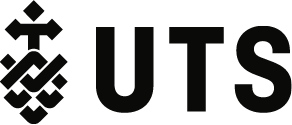This post follows on from a presentation given at the 2024 UTS Teaching and Learning Forum
The question in this blog post’s title is very reasonable. To answer it, we could just say: “if you do it, it’s academic misconduct!” However, this response is in no way educational and only focuses on Generative AI in terms of academic integrity, something we are increasingly advised to avoid.
At UTS College, we answer such questions in this way:
- Professionals have already acquired the necessary skills to produce work independently and evaluate GenAI output
- Students who are embarking on their Higher Education journey have not yet developed the foundational skills required to independently produce the work, or the expertise to evaluate the output
In addition, from the educator’s perspective, our courses are not currently designed to assess a student’s ability to codesign or cocreate work using GenAI. In the main, we are still measuring a student’s ability to produce work independently of a tool with such capabilities.
For the sake of the student’s development and for our own assurance of learning, we needed a way to explain all of this. In fact, students have been reporting that guidance around effective and responsible usage of GenAI is something that they desire. A survey conducted last year found that only 32% of respondents felt they had enough guidance on how to use GenAI effectively in their studies. In addition, a 2025 study by Attewell concluded that:
Their message to institutions is clear. Students and learners don’t want AI to be treated as something to be feared or avoided. Instead, they want practical support to help them use it well. That means clear policies, consistent guidance, and training in how to use AI ethically, effectively and responsibly.
(Attewell, 2025)
Our Educational Approach to GenAI
By October 2024, UTS College had implemented clear policies, consistent guidance and practical support. We then went one step further by establishing a definition of effective GenAI usage. As a result, we are now able to answer another important question that students have: how do I use GenAI in my studies in a way that doesn’t negatively impact my learning or breach academic integrity?
To answer this, we have taken a learning design and alignment perspective and provide guidance based on a distinction between knowledge and skills, which is in fact the AQF’s own method of expressing learning outcomes.
Effective GenAI usage
The advice we are providing to students is that if they use GenAI (as a supplementary tool) to build knowledge and enhance retention of that knowledge, they will not disadvantage themselves or breach academic integrity.
Additionally, they will benefit from the kind of personalised assistance that GenAI can provide.

Ineffective GenAI usage
Conversely, we advise students that if they use GenAI to produce work or to do the work for them, they will not develop the very foundational skills they are in education to learn.
Importantly, we also tie specific uses of GenAI to the very skills students will miss out on developing if they use GenAI in this way.

A flexible framework
One of the key elements of our Educational Approach is a flexible framework that helps communicate our guidance on Canvas assessment pages:
| What? | Clear expectations | Transparency | Educational reason 1 | Educational reason 2 |
|---|---|---|---|---|
| How? | Define GenAI-related academic misconduct; outline effective usage (knowledge-building & retention) | Request acknowledgment of any assessment-related GenAI usage; provide an easy method for students to do this | List the skills students will not develop if they use GenAI to produce the submission for them | Give specific examples of how GenAI performed when asked to produce the task or give general examples of GenAI limitations |
| Why? | Provides clarity for both students & staff | Helps elevate GenAI to a non-cheating tool; helps students plan & reflect on usage | Helps students realise why they should not use it for certain tasks & how it would impact their learning | Helps model evaluation, test susceptibility of assessment item & highlight its limitations |
As well as the framework, we have taken other steps to help provide guidance for our students. These include updating the compulsory academic integrity module, running orientation week workshops, providing synchronous and asynchronous activities that help model effective GenAI usage and build evaluative judgement and facilitating meaningful discussions. All these actions have led to a high rate of awareness around effective GenAI usage and GenAI-related academic misconduct, as seen in the results of a student survey conducted in March 2025.
Student awareness
Students were asked two simple questions: ‘Do you know how to use GenAI effectively in your studies?’ and ‘Do you know what GenAI related academic misconduct is?’.
Of the 950 responses collected, there is a clear majority of students who have answered ‘yes’ to both questions.

Empowering our students to develop good GenAI practices
Ultimately, students will decide for themselves if and how they use GenAI in their studies and assessment-related work. However, by educating our students on how and why its usage may either benefit or disadvantage them, they will hopefully begin to make decisions that enhance their learning, and that may reduce instances of academic misconduct. Head to the UTS College website for more information on our approach.
